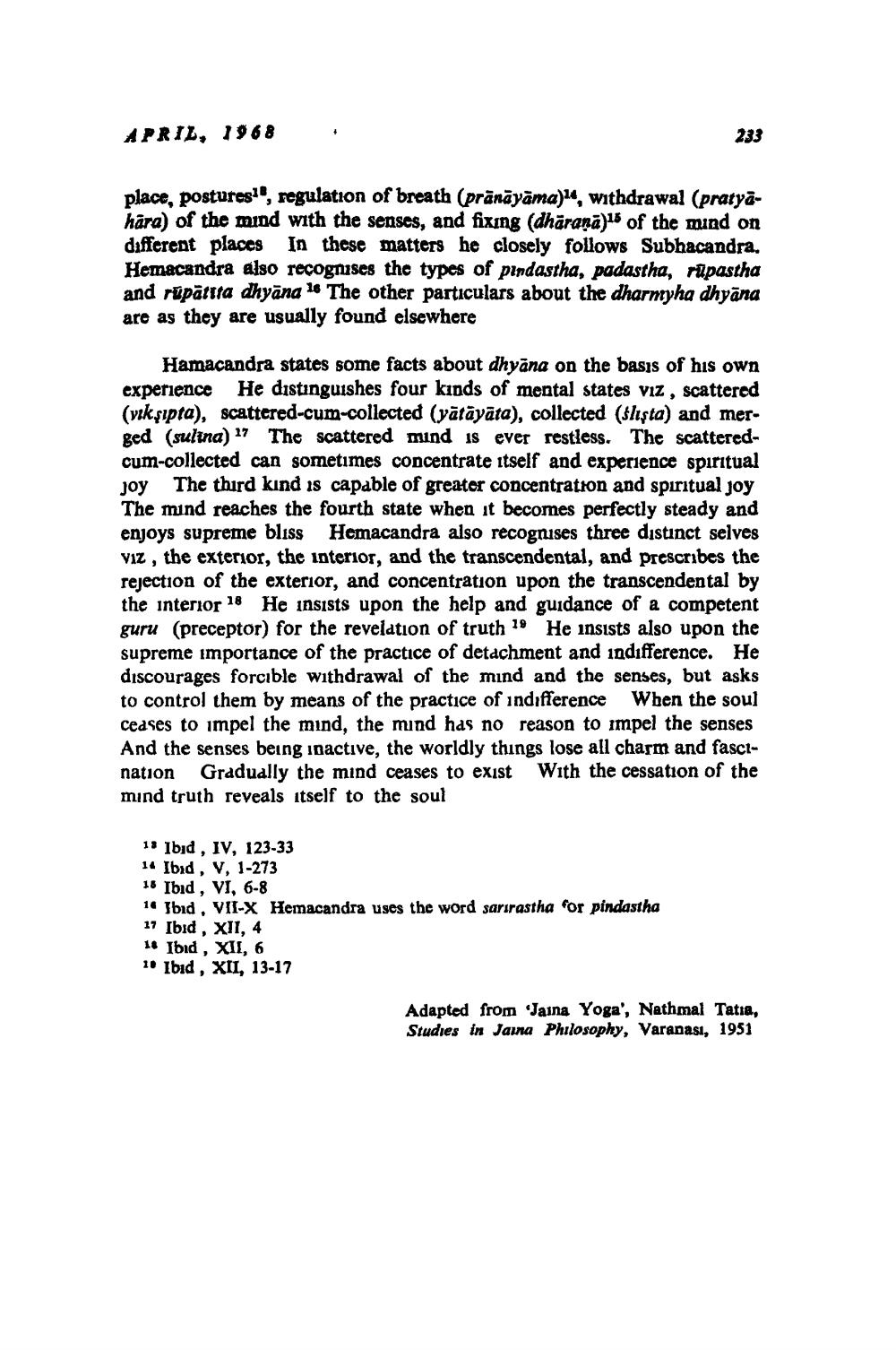________________
APRIL, 1968
233
place, postures'', regulation of breath (prānāyāma), withdrawal (pratyahara) of the mind with the senses, and fixing (dhāranā) of the mind on different places in these matters he closely follows Subhacandra. Hemacandra also recognises the types of pindastha, padastha, ripastha and rüpārtra dhyāna 16 The other particulars about the dharmyha dhyāna are as they are usually found elsewhere
Hamacandra states some facts about dhyāna on the basis of his own experience He distinguishes four kinds of mental states viz , scattered (vikşıpta), scattered-cum-collected (yātāyāta), collected (shsta) and merged (sulina) · The scattered mind is ever restless. The scatteredcum-collected can sometimes concentrate itself and experience spiritual joy The third kind is capable of greater concentration and spiritual joy The mind reaches the fourth state when it becomes perfectly steady and enjoys supreme bliss Hemacandra also recognises three distinct selves viz , the exterior, the interior, and the transcendental, and prescribes the rejection of the exterior, and concentration upon the transcendental by the interior 18 He insists upon the help and guidance of a competent guru (preceptor) for the revelation of truth 19 He insists also upon the supreme importance of the practice of detachment and indifference. He discourages forcible withdrawal of the mind and the senses, but asks to control them by means of the practice of indifference When the soul ceases to impel the mind, the mind has no reason to impel the senses And the senses being inactive, the worldly things lose all charm and fascination Gradually the mind ceases to exist With the cessation of the mind truth reveals itself to the soul
18 Ibid , IV, 123-33 14 Ibid, V, 1-273 18 Ibid, VI, 6-8 14 Ibid, VII-X Hemacandra uses the word sarırastha for pindastha 17 Ibid , XII, 4 1. Ibid , XII, 6 1. Ibid, XII, 13-17
Adapted from Jaina Yoga', Nathmal Tatia, Studies in Jaina Philosophy, Varanası, 1951




